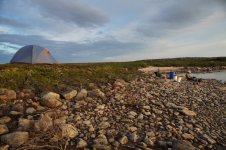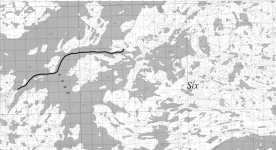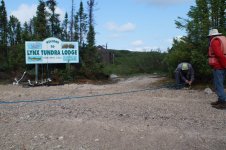Two years after a tragedy on Shoshone Lake, rangers reveal details of the search for two lost canoeists, including one who remains missing.
The Boys and the Lake
The Boys and the Lake
One of the pfds was zipped up. I'm thinking that It was not being worn.It is a mystery why they weren't wearing the pfds. Is it possible they took them off to try to climb back in the boat?



I wonder what lessons could be learned from this episode. From MrPoling and Chip's descriptions of how sudden and variable the winds can be, what are the options for safety? Would staying near shore be enough? If the wind is offshore, what are the odds of making it back to shore is those conditions? I assume in such winds and only 1 boat, self-rescue would be nigh impossible - do you ditch the boat and swim for the nearest shore?
I think the easy answer is large crossings in those conditions need a dry suit.I wonder what lessons could be learned from this episode. From MrPoling and Chip's descriptions of how sudden and variable the winds can be, what are the options for safety? Would staying near shore be enough? If the wind is offshore, what are the odds of making it back to shore is those conditions? I assume in such winds and only 1 boat, self-rescue would be nigh impossible - do you ditch the boat and swim for the nearest shore?
Seems possible. A possibility mentioned in the article is "hypothermic paradoxical undressing", in which your brain function is so diminished by cold that you think you're hot and start to strip - it's fairly well documented. Could also have been hypothermic paradoxical logic of 'I'll do better swimming without this PFD in the way' or something like that.It is a mystery why they weren't wearing the pfds. Is it possible they took them off to try to climb back in the boat?
Glenn,I always felt MUCH safer in whitewater up to class 4 than I ever did on big open water lakes or the ocean. Yes, there are remote risks of pin drowning in undercuts and sweepers or flush drowning in very long wave trains, but on rivers the rapids end within a few minutes at most and the shore is always nearby. Out a quarter mile or more on a cold, wind-prone lake or the ocean, without a solid roll or other self-rescue ability, is much riskier to me.
Glenn,
I've always felt much safter in class 4 whitewater than I usually do on big lakes also. I understand whitewater, don't big open water. I don't paddle on the ocean at all. That thing can kill your *ss.
